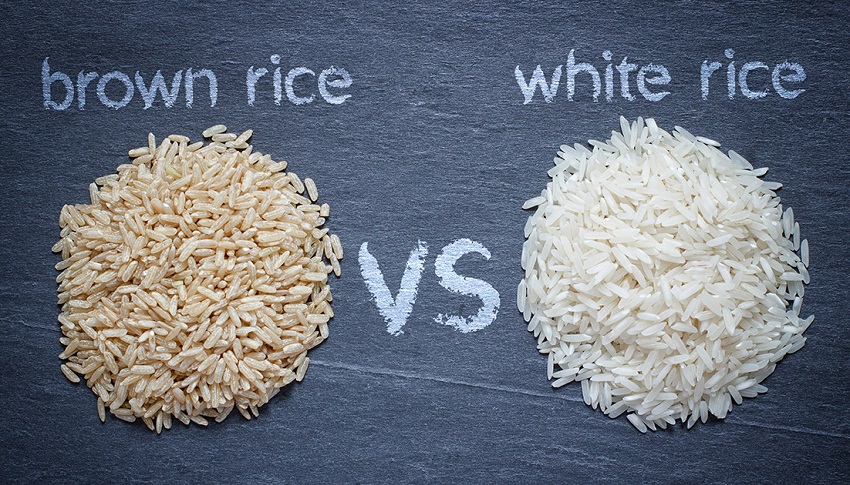Rice is the staple food of Asia, particularly in the Indian subcontinent. Whether it is Biryani, pulao, idli, dosa, or simply daalchawal, rice is an integral part of the Indian diet.
Rice mainly consists of carbs and small amounts of protein, vitamins, and hardly any fat.
What’s in a rice grain?
- Hull (outer covering)
- Bran –this covering has the most nutrients
- Germ- the grain we eat
White rice is a polished version where the hull and bran are removed and the white rice polished and sold. This has hardly any vitamins because they are located in the bran covering of rice.
Brown, unpolished or unprocessed rice is called so because the bran is retained on the grain. Only the husk is removed. It is bran that gives the brown color to rice and has all the important nutrients.
Brown and white rice come from the same plant. Milling process removes the inedible hull. Retaining the bran makes rice brown and removal of bran makes it white. It is bran that contains all vitamins and nutrient content along with fiber.
Vitamins are important for people with Type 1 diabetes because of the restricted intake. Brown rice is recommended because bran has vitamins, antioxidants and fiber. Fiber helps in slowing down digestion, promoting efficient working of the colon (digestive system) and reducing the risks of heart problems.
Rice options for people with type 1 and type 2 diabetes in a Diabetes diet chart
- Khichdi – Soak equal quantities of brown rice and moong dal. Pressure cook with salt and haldi till very soft. Season with Hing and cumin seed – Wholesome and nourishing
- Idli and Dosa – Substitute white or parboiled rice with brown rice. Same taste, but fewer calories.
- Curd rice – Mix curds with brown rice, add salt and season with mustard seeds and curry leaves. Garnish with chopped coriander leaves.
- Rissotto, Bisibele, lemon rice, pulao can be easily made with brown rice.
Combine brown rice with Sambhar, kadhi or any low-fat vegetables or meats, salad and curd for a full meal.











